Procol • April 15, 2025
Here’s How Forward Auction Enhances Your Procurement Process
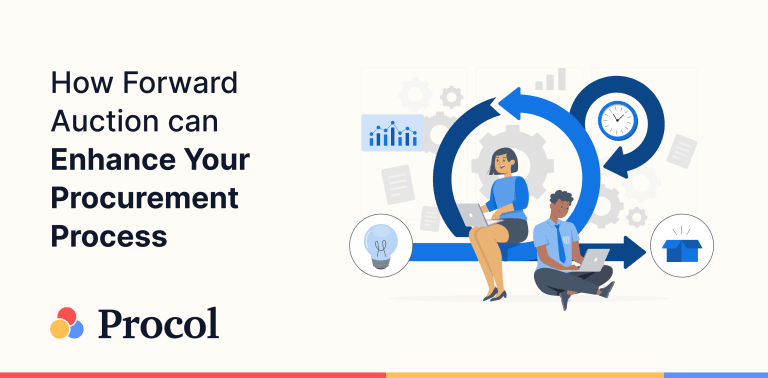
Introduction
Business owners must know about auctions. It is a bid to purchase goods/services, and the person who bids for a higher price will win. Businesses use the term forward auction to buy procurement goods and services. In forward auctions, buyers must bid for goods and services, and the higher bidder wins.
For example, if the suppliers put a product up for auction, potential buyers will bid, and the highest bidder will win the goods and services contract at the accepted bidding amount. The product or services can include raw materials, equipment, etc. A forward auction ensures the buyer gets the best value for their money.
Let’s learn more about a forward auction, its benefits, and why it is helpful in the business world.
What is an eAuction?
eAuction, also called an electronic auction, is conducted in an online marketplace. In this auction both buyer and seller take part. The process starts when a seller posts requirements for goods and services, and potential buyers from the market submit their bids online, and the bidding process continues until the winning bid is determined. It lets suppliers compete online for contracts. Bidding takes place between businesses and consumers or between consumers and companies.
There are two categories of e-auctions:
- Reverse auctions
- Forward e-auction
What is a reverse auction?
A reverse auction is also known as a buyer-determined auction or procurement auction. It is conducted when there are multiple sellers in the marketplace. In this auction, the buyer posts their buying requirements for goods and services. Sellers then compete with each other to offer the best possible price for the goods or services.
What is a forward auction?
A forward auction refers to an auction with one seller and various buyers. In a forward auction, the bidding starts with a single supplier offering goods or services, and multiple buyers bid for the product by starting at a lower price. The process gradually increases until the highest bidder wins and gets the contract at the same price. A forward auction example can be a car auction.
For example, a car model, such as a BMW, is put into auction using the English method. The bid starts at $10,000. The price will increase as the participants compete and bid higher. Ultimately, only one bidder bids higher, for example, $90,000, which is considered the final bid. The person who bids the highest will get the car if the seller accepts the bid.
Types of the forward auction
Forward auctions are further divided into four types:
English Auction:
The standard auction type is also called an open outcry auction. English auction starts with setting the minimum bid, gradually increasing until participants stop bidding. Thus, a participant who bids higher wins once the seller accepts the bid. English forward auction example include selling wine, art, antiques, etc.
Dutch Auction:
It starts with setting a higher bid and decreases until someone makes the bid. Whoever places the first bid wins the auction. The other name of the Dutch auction is the descending price auction. Dutch forward auction example include selling Treasury securities, floating-rate debt instruments, initial public offerings (IPOs), and other securities.
Yankee Auction:
OnSale.com developed the Yankee auction in the 1990s. It is a single-attribute multiunit auction, a variation of a Dutch auction. In this auction, multiple items are offered for sale together. Hence, the highest bidders win. A Yankee forward auction example is selling cigars.
Japanese Auction:
The lower price is displayed in the Japanese auction, which can be 0 or the seller’s reserve price. Interested parties enter the auction arena and continue to bid for a higher price. The buyer can exit the arena but cannot re-enter it. When only a single buyer is left, the auction stops as that buyer wins the bid. Japanese forward auction examples include selling business excess inventory, cars, electronics, and real estate.
What is the bidding process in the forward auction?
The bidding process in forward auction follows step-by-step procedures. In this, all the participants or buyers compete with each other to place a higher bid. Check out the bidding process for the forward auction below:
1. Auction Setup: The auctioneer ( an individual, organization, online platform, etc.) sets up the bid auction. First, the auctioneer starts by defining the terms and conditions to maintain transparency, such as items to be auctioned, setting the starting price, auction duration, etc.
2. Bid invitation or announcement: The auctioneer invites potential buyers to participate in the auction through advertising, online listening, sending selective invitations, etc.
3. Bidding begins: The auction starts on the desired date and time. Participants place their bids, which start at a lower amount and gradually increase. Bidders can bid manually or using the internet.
4. Bidding increments: As the bidding moves further, participants place higher bids, surpassing the highest. This is where the concept of bid increments comes into play. In their role of maintaining transparency, the auctioneer determines the bidding increment. This sets the lowest amount by which the next bid exceeds the current one. For example, if the recent bid is $500 and the bidding increment is $10, the following bid must be at least $510.
5. Competitive Bidding: Participants keep on bidding to win from competitors. Bidders keep on raising a higher bid to outbid the prior bid.
6. Auction Progression: Bidding continues until the designated end time mentioned by the auction or if no further bids exist are received. The auctioneer has the authority to extend the auction duration if there is active bidding to allow for additional bids.
7. Auction Closure: The highest bidder is declared the winner once the auction ends. The bidder who wins signs the contract.
What is auction software?
Auction software is auction management software that helps businesses participate in live auctions. It lets you set up an online marketplace to conduct forward, reverse, and silent auctions, connecting business owners with vendors, service providers, bidders, etc. All participants bid to buy auction items and services using text-based or live bidding options.
Nowadays, businesses use software tools for bid management, such as billing, invoicing, spend analysis, membership management, etc. The tool also has payment options and allows the winning bidder to complete transactions securely using different payment methods, such as credit cards, debit cards, internet banking, etc.
What are the features of auction software?
Auction software characteristically includes numerous features to ease the forward auction procedure efficiently. Here are some of the main features of auction software:
User recordkeeping and management: It permits users to make accounts, manage user profiles, and pathway their activities, such as tenders and procurements.
-
Listing products: The forward auction software empowers sellers to create listings for the products they want to auction. This feature may comprise choices for uploading descriptions, item images, starting prices, reserve prices, and other appropriate details.
-
Auction system: Delivers a forward auction tool for users to place offers on auction objects. This feature supports real-time auctions, automatic offer increments, and substitution bidding.
-
Forward e-auction management: Admins should have tools to manage e-auctions, including setting up auction limits such as start and end times, handling auctions, and closing bids.
-
Payment mechanism: Partner with payment gateways to facilitate safe transactions between buyers and sellers. This feature should support numerous payment methods, such as PayPal, credit cards, and other online payment modes.
-
Updates: Automatic updates to users about bid status, such as when they’ve spent or if they got an auctioned item.
-
Forward auction messaging system: Forward auction permits communication between buyers and sellers within the messaging system. This feature assists in bargaining prices, simplifying item details, and managing payment and delivery.
-
Analytics and reporting forward auction tool: The forward auction tool offers insights into bid performance, comprising data on auction activity, item popularity, and revenue made. This feature assists users with well-versed choices about future bids.
-
Mobile: With the increase of mobile devices, forward auction tools should be designed for mobile use through responsive web design or devoted mobile apps.
-
Safety features: Vigorous safety measures guard user data, avoid fraud, and guarantee the integrity of the bidding procedure. These measures comprise encoding, user verification, and compliance with data protection guidelines.
-
Tailor-made options: Managers can modify the forward e-auction according to their specific requirements, such as marking options, tailor-made bidding templates, and adaptable fee structures.
-
Client assistance: Access to client support resources, such as tutorials, FAQs, and helpdesk services, to support users with any issues they encounter while using the tool.
These features can differ depending on the precise requirements of the forward e-auction platform and its target audience, but they deliver a complete summary of the functionalities usually found in auction software.
What are the benefits of a forward auction?
There are various key benefits of forward action mentioned below:
Increasing selling price: In a forward auction, the price characteristically starts low and grows as buyers compete. It can lead to the item selling at an increased price than the seller primarily expected, increasing their revenue.
1. Finding market price: Forward auction software eases price discovery by allowing sellers to measure the market value of their items. The auction procedure imitates the demand and rivalry for the item, providing insight into its perceived value.
2. Capable sales procedure: Forward e-auctions are frequently speedy and effective. Sellers can rapidly sell items to the uppermost auction-goer without any need for negotiations or protracted sales cycles.
3. Extensive audience reach: Forward e-auction is worldwide, permitting sellers to influence a large and varied pool of possible buyers. It can entice curiosity about the item and increase the probability of attaining a promising selling price.
4. Terms and conditions: Sellers can set precise terms and conditions for their bids, such as reserve prices, opening prices, and bidding increments, in a forward auction. This transparency aids in accomplishing consumer potential and safeguards a reasonable and logical bid procedure.
5. Insolvency of additional inventory: Forward auctions are an efficient way for sellers to settle additional or surplus goods. It can allow valued storage space and make a profit for the seller.
6. Competition aids buyers and sellers: The modest nature of forward auction software benefits buyers and sellers. Buyers can buy items at viable charges, while vendors can attain higher selling prices due to viable auctions.
7. Elasticity: Forward auctions can be custom-made to suit the requirements of diverse sellers and industries. Sellers can select the duration, bid format, and other parameters to enhance their selling approach.
Overall, forward auctions provide a changing and effective forward auction tool for sellers to sell their goods and for buyers to acquire items at viable prices.
Key considerations when purchasing auction software
When buying forward auction tools, numerous key considerations can assist in guaranteeing you select the correct solution for your requirements. Here are some significant features to keep in mind:
Features and functions:
Assess the features accessible by the forward auction tool. It may comprise auction competencies, bidding item management, payment mechanisms, reporting and analytics, mobile compatibility, amalgamation options, and tailor-made competencies.
Consumer interface and knowledge:
The forward auction software should have a spontaneous and accessible interface for administrators and buyers. A simple and easy-to-use experience can improve participation and assignation in the bids.
Safety and compliance:
Ensure the forward auction software provides robust safety measures to guard delicate data like auction information and payment particulars. Based on your location and the nature of your bids, it should also fulfil appropriate guidelines, such as GDPR or PCI DSS.
Scalability:
Study the scalability of the software to accommodate your present requirements and possible future growth. It should be able to manage growing numbers of auctions and products without bargaining performance.
Amalgamation competencies:
Verify if the forward auction software can work with other systems and tools you use, like payment gateways, CRM software, or marketing tools. Amalgamation can rationalize procedures and recover competence.
Client support and training:
Look for a seller that provides consistent customer support and training resources. These comprise access to technical backing, documentation, tutorials, and training and development sessions to assist you in making the most of the software.
Price and pricing policy:
Study the overall price of the software, including transaction fees, setup fees, licensing fees, or ongoing conservation charges. Compare cost structures from diverse sellers to find the most lucrative solution for your budget.
Tailor-made and elasticity:
Measure the changes required and flexibility accessible by the forward auction software. It should permit you to customize the software to your needs and branding preferences.
Mobile reach:
In today’s rapidly changing world, auction software needs to be well-matched with mobile devices. It guarantees that auctioneers can contribute to auctions suitably from their smartphones or tablets.
Feedback and reviews:
Seek feedback and reviews from other users or businesses using the auction software. This can offer valuable insights into the software’s strengths, weaknesses, and complete fulfilment level.
By prudently considering these factors, you can choose auction software that meets your organization’s requirements and eases fruitful bids.
Benefits of Auction Software
Auction software has several key benefits that help businesses succeed by saving costs and time. Forward auction software provides several benefits for both auction managers and members. Some of the key benefits include:
1. Competence:
Forward Auction software restructures the complete bidding procedure, from item listing and auction to payment mechanism and reporting. It mechanizes many manual tasks, saving time and decreasing potential errors.
2. More comprehensive approach:
Forward e-auction software allows bids to reach a worldwide audience. Auctioneers can contribute from any place with an internet connection, growing the potential for higher auctions and better competition.
Improved profits: Forward auction software can assist organizations in growing the profit made from their auctions by attaining a higher audience and cheering competitive auctions. The comfort of participation also inspires more recurrent auctions.
3. Enhanced engagement:
Collaborative features such as actual auctions, involuntary notifications, and mobile convenience improve auctioneer engagement. Participants can effortlessly track their auctions and obtain updates on bidding status, developing a more immersive experience.
4. Analytics and perceptions:
Forward Auction software typically comprises reporting and analytics tools that offer valuable insights into auctioneer behavior, item performance, and complete auction success. Managers can use this data to enhance future bids and make data-driven results.
5. Improved safety:
Most Forward auction software platforms hire robust safety measures to guard sensitive information such as auction-goer details and payment transactions. Encoding, secure payment gateways, and compliance with data protection guidelines help ensure a safe and secure bidding environment.
6. Tailor-made options:
Forward Auction software frequently provides tailor-made options, allowing managers to customize the platform to their branding and specific needs. This flexibility protects amalgamated and professional auction skills for both managers and participants.
7. Amalgamation with other systems:
Many Forward auction software solutions provide amalgamation competencies, permitting continuous connectivity with CRM software, payment gateways, and accounting software. This amalgamation restructures processes and decreases manual data entry.
8. Scalability:
Whether establishing a small charity bidding or a large-scale fundraising event, forward auction software can gage to accommodate changing requirements and audience sizes. It can manage thousands of auctioneers and items without forgoing performance.
9. Training session and development:
Trustworthy auction software sellers offer continuing support and training resources to assist controllers in making the most of the tool. It comprises documentation, technical assistance, tutorials, and best practices for running effective bids.
Overall, the forward auction tool provides a complete solution for handling bids proficiently, growing revenue, and delivering an attractive experience for organizers and participants.
Why choose Procol eAuctions Pro?
Tradition auctions were time-consuming, limited in participation, costlier, and needed more transparency. Forward auction tools have reversed these limitations while fulfilling the needs of modern businesses. Procol’s eAuctions Pro software offers a seamless experience, helping companies negotiate online, implement cost-saving methods, and enable a transparent bidding process. Procol eAuctions Pro has eliminated the need for manual auction practices. Thus, the forward auction software lets companies save on costs and maintain compliance. Therefore, businesses can get streamlined procurement and real-time data insights by implementing a forward auction tool.
The forward auction tool offers different features like:
- One-click bid
- Advanced e-auction strategies
- Transparent supplier engagement
- Mobile Accessibility
- Savings report
Conclusion
Understanding forward auctions and how they work is important for people involved in buying and selling products. A forward auction is an auction where bids start from the lowest amount. Traditionally, auctions were conducted manually, but now, various forward auction software applications help procurement teams handle the process efficiently to make informed decisions saving on cost and time.
Explore more from Procol
Discover expert tips, how-to guides, industry insights, and the latest procurement trends.
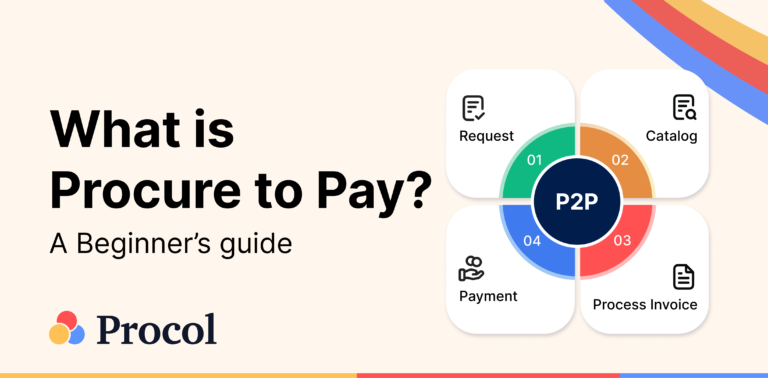
What is Procure-to-pay (P2P)? An Ultimate Guide
Procure to pay is the process from procurement of materials needed...
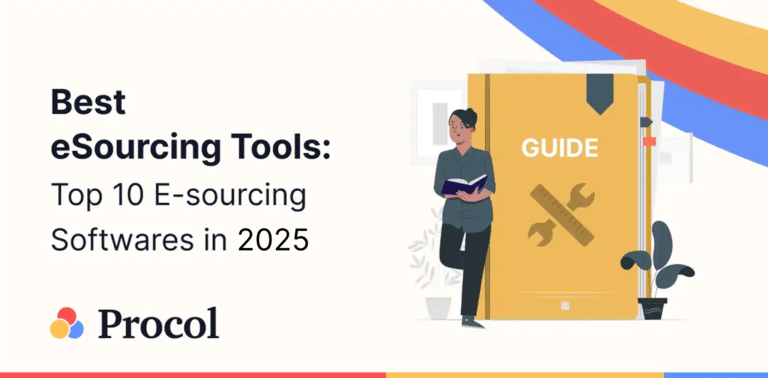
Best eSourcing Tools: Top 10 eSourcing Software in 2025
Discover top 10 e-sourcing tools and esourcing platforms necessary for efficient...
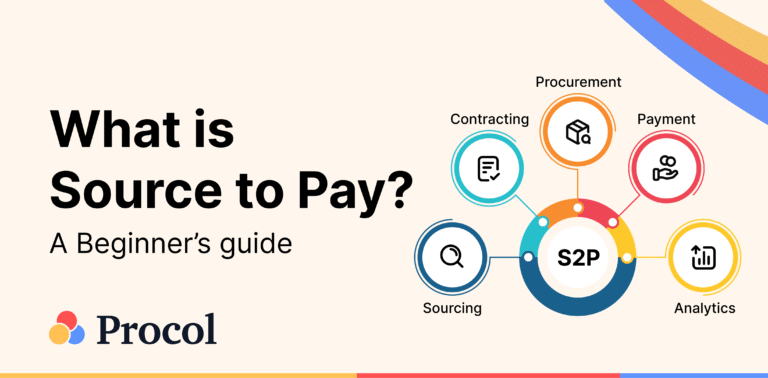
What is Source-to-pay in 2025? An Ultimate Guide
Source to pay is the process of sourcing vendors to procure...

